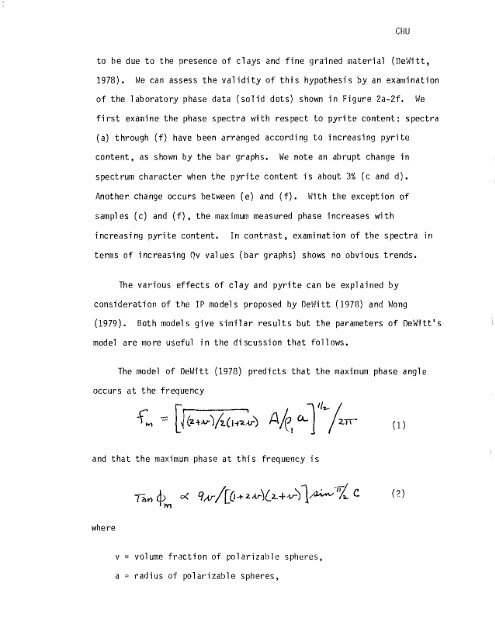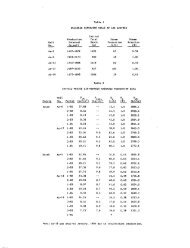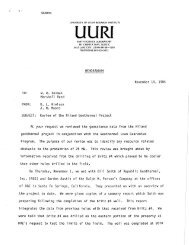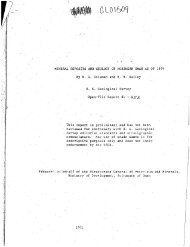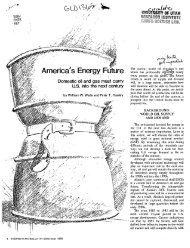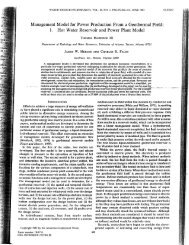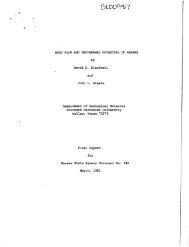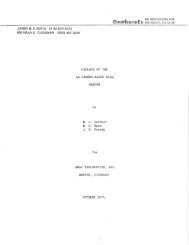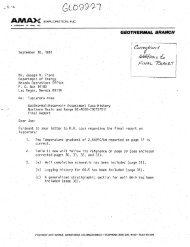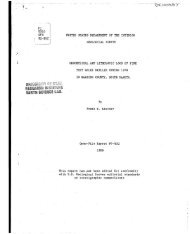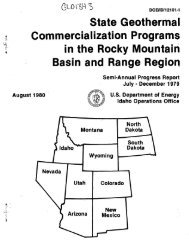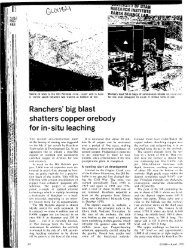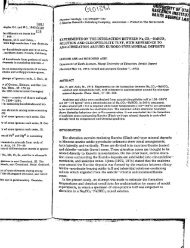"INDUCED POLARIZATION DATA AT ... - University of Utah
"INDUCED POLARIZATION DATA AT ... - University of Utah
"INDUCED POLARIZATION DATA AT ... - University of Utah
Create successful ePaper yourself
Turn your PDF publications into a flip-book with our unique Google optimized e-Paper software.
CHU<br />
to be due to the presence <strong>of</strong> clays and fine grained material (DeWitt,<br />
1978). We can assess the validity <strong>of</strong> this hypothesis by an examination<br />
<strong>of</strong> the laboratory phase data (solid dots) shown in Figure 2a-2f. We<br />
first examine the phase spectra with respect to pyrite content: spectra<br />
(a) through (f) have been arranged according to increasing pyrite<br />
content, as shown by the bar graphs. We note an abrupt change in<br />
spectrum character when the pyrite content is about 3% (c and d).<br />
Another change occurs between (e) and (f). With the exception <strong>of</strong><br />
samples (c) and (f), the maximum measured phase increases with<br />
increasing pyrite content. In contrast, examination <strong>of</strong> the spectra in<br />
terms <strong>of</strong> increasing Qv values (bar graphs) shows no obvious trends.<br />
The various effects <strong>of</strong> clay and pyrite can be explained by<br />
consideration <strong>of</strong> the IP models proposed by DeWitt (1978) and Wong<br />
(1979). Both models give similar results but the parameters <strong>of</strong> DeWitt's<br />
model are more useful in the discussion that follows.<br />
The model <strong>of</strong> DeWitt (1978) predicts that the maximum phase angle<br />
occurs at the frequency<br />
and that the maximum phase at this frequency is<br />
where<br />
v = volume fraction <strong>of</strong> polarizable spheres,<br />
a = radius <strong>of</strong> polarizable spheres,<br />
(1)


